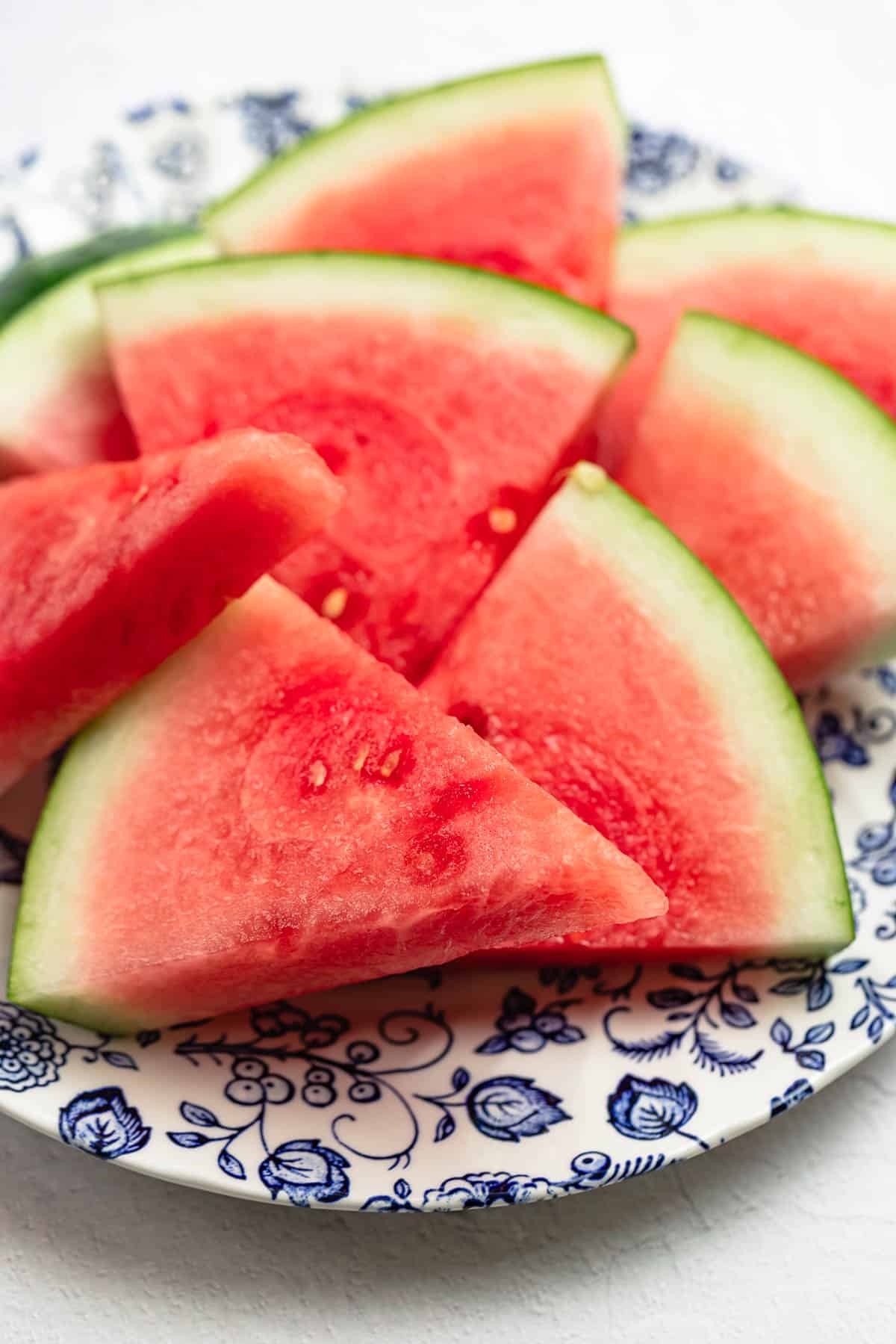Choosing the perfect watermelon can often feel like a gamble. You’re at the grocery store or farmer’s market, surrounded by these large green fruits, and hoping to select one that’s bursting with juicy sweetness. Have you ever brought a watermelon home, excitedly sliced it open, only to be met with a pale, tasteless disappointment? You’re definitely not alone! Knowing How To Pick A Good Watermelon is a valuable skill, ensuring your summer days are filled with refreshing and flavorful fruit. Luckily, with a few simple techniques, you can confidently choose a watermelon that’s ripe, sweet, and exactly what you’re craving.
There’s nothing quite like biting into a perfectly ripe watermelon on a hot day. The refreshing sweetness is unmatched. Imagine preparing a vibrant watermelon salad or simply enjoying chilled wedges as a snack. To consistently experience this summertime delight, understanding how to select the best watermelon is key. Let’s explore the essential tips and tricks to help you pick a winner every time.
Key Factors in Choosing a Ripe Watermelon
Many factors contribute to a watermelon’s sweetness and ripeness, from the growing conditions and heat it received to proper pollination. While you can’t ask the farmer these details at the store, you can use visual and tactile cues to make an informed choice. Here’s a detailed guide on what to look for when selecting your next watermelon.
1. Shape and Symmetry Matters
When examining watermelons, start by looking at their shape. The best watermelons are typically symmetrical, whether they are oval or round. Avoid watermelons with irregular shapes, bumps, or dents. A consistent shape often indicates even growth and ripening.
2. Weight: Heavier is Usually Better
Pick up a few watermelons of similar size and feel their weight. A good, ripe watermelon should feel surprisingly heavy for its size. This heft indicates high water content, which is a sign of juiciness and ripeness. If a watermelon feels light and hollow, it might be underripe or have less flavor.
3. Skin Color and Dullness: Look for Deep Green
The skin of a ripe watermelon should be dark green and dull, not pale or shiny. A shiny rind can be a sign that the watermelon is underripe. The deep, matte green color indicates maturity and sweetness.
4. Webbing or Sugar Spots: Embrace the Imperfections
Check the webbing, those dark, zigzagged stripes on the watermelon’s surface. Larger, more prominent webbing suggests that the watermelon was well-pollinated. These “sugar spots” or webbing are actually tiny cracks that have healed over, indicating sugar is seeping out, a great sign of sweetness.
5. The Field Spot: Your Ripeness Indicator
The field spot, also known as the ground spot, is the area where the watermelon rested on the ground as it ripened. This spot is crucial for determining ripeness. Look for a field spot that is creamy yellow or even dark yellow. A yellow field spot means the watermelon had ample time to ripen on the vine, developing its full flavor and sweetness. Avoid watermelons with a white or very pale field spot, as this suggests it was picked too early and may not be fully ripe. Think of the field spot as a “bald spot” that tells a story of sun-kissed ripening.
6. The Sound Test: Tapping for Ripeness
The “tap test” is a classic method for judging watermelon ripeness. Hold the watermelon and tap it firmly with your knuckles. Listen to the sound it produces. A ripe watermelon should have a deep, hollow sound, resonating with a lower pitch, like a tenor note. This sound indicates that the flesh is dense with water and ripe. An unripe watermelon will often produce a higher-pitched, dull, or shallow sound. While mastering the tap test takes practice, it can be a helpful additional indicator when combined with other methods.
Quick Checklist for Picking the Perfect Watermelon
To summarize, here’s a quick checklist to guide you to the sweetest watermelon:
- Symmetrical Shape: Choose a watermelon that is evenly shaped, round or oval.
- Heavy Weight: Select a watermelon that feels heavy for its size.
- Dull, Dark Green Skin: Look for a matte, deep green rind, avoiding shiny or pale skin.
- Prominent Webbing: Check for significant, dark webbing or sugar spots.
- Yellow Field Spot: Find a watermelon with a creamy yellow to dark yellow field spot.
- Deep, Hollow Sound: Tap the watermelon and listen for a resonant, deep sound.
By using these tips, you’ll be well-equipped to confidently select delicious, ripe watermelons every time you shop. Get ready to enjoy the sweet taste of summer!
